Everyone wants to make slime these days! Did you also know that making slime is awesome science too. If you want your kids to get more out of their slime making experience, turn it into a slime science project and apply the science method too! Read on to find out how you can set up science experiments with slime and have a cool science fair project idea.
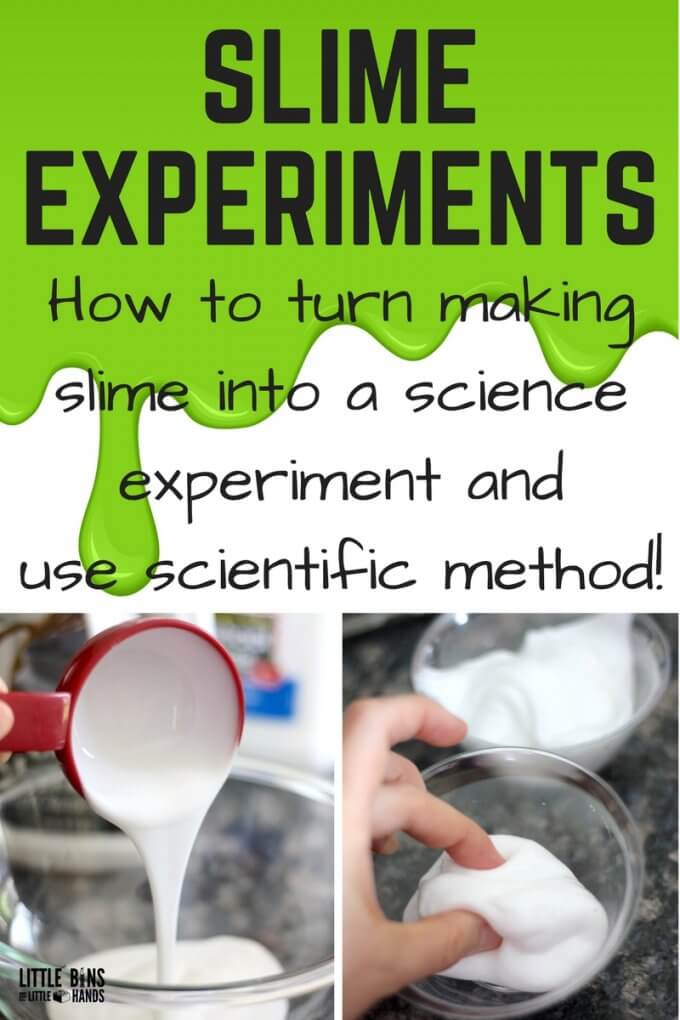
How To Make Slime
Homemade slime is a real treat for kids, and right now it’s a super popular activity that also happens to make a great science fair project. We have experimented with our slime recipes over and over again to bring you the best possible activities!
We also have a very cool fizzing slime recipe, watch the video and get the slime recipe here. Two chemistry demonstrations in one!
Which Slime Recipe To Use?
Our easy, “how to make” slime recipes show you how to master slime in 5 minutes or less! We have spent years tinkering with our favorite basic slime recipes to make sure you can make the BEST slime every time!
We believe slime shouldn’t be disappointing or frustrating! That’s why we want to take the guesswork out of making slime!
- Discover the best slime ingredients and get the right slime supplies the first time!
- Make easy slime recipes that really work!
- Achieve awesome slimy consistency the kids’ love!
We have several basic slime recipes that can all be used for your slime science project. You decide which one works best for you depending on what slime activator you want to use. This allows for some flexibility depending on where you live in the world! Not everyone has access to the same ingredients!
Each of the basic slime recipes below have the full step by step photos, directions, and even videos to help you along the way!
Helpful Slime Making Resources To Get Your Started
These are the best resources to look through before, during, and after making slime! We talk more about slime science below too.
- Slime Activator List
- What is slime?
- What You Need To Make Slime
- Amazing Benefits Of Playing With Slime
- Best Slime Ideas
- How To Make Slime Less Sticky
- How To Get Slime Out Of Clothes And Hair
The Science of Slime
Chemistry is all about states of matter including liquids, solids, and gasses. It is all about the way different materials are put together, and how they are made up including atoms and molecules. Chemistry is how materials act under different conditions and/or form new substances. Just like slime!
Slime is an endothermic reaction as opposed to an exothermic reaction. An endothermic reaction absorbs energy (heat) instead of giving off energy (heat). Have you ever noticed how cold your slime gets?
The borate ions in the slime activator (sodium borate, borax powder, or boric acid) mix with the PVA (polyvinyl acetate) glue and form this cool stretchy substance. This is called cross-linking!
The glue is a polymer and is made up of long, repeating, and identical strands or molecules. These molecules flow past one another keeping the glue in a liquid state. Until…
You add the borate ions to the mixture, and it then starts to connect these long strands together. They begin to tangle and mix until the substance is less like the liquid you started with and thicker and rubbery like slime! Slime is a polymer.
Picture the difference between wet spaghetti and leftover spaghetti the next day. As the slime forms, the tangled molecule strands are much like the clump of spaghetti!
Is slime a liquid or solid?
We call it a non-Newtonian fluid because it’s a little bit of both! Experiment with making slime more or less viscous with varying amounts of foam beads. Can you change the density?
Using The Scientific Method
To take your slime making activity from a science demonstration to a slime science experiment, you will want to apply the scientific method. You can read more about using the scientific method with kids here.
Follow this process…
- Figure out a question you want to answer.
- Do some research.
- Gather the supplies.
- Conduct a science experiment.
- Gather data and look at the results.
- Draw your own conclusions and see if you answered your question!
Remember the key to conducting a good science experiment is to only have one variable. For example, water could be a variable. We eliminated the water from our recipe to see if slime needs water as an ingredient. We kept the rest of the recipe exactly the same!
Read more about using variables in science here.
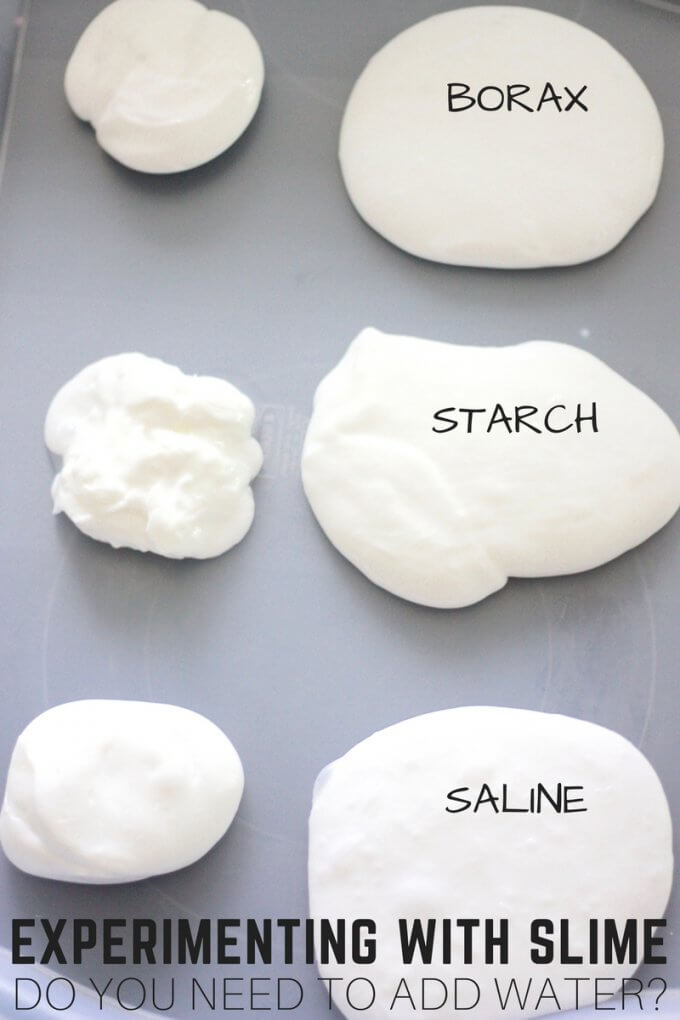
Turn It Into A Science Project
Science projects are an excellent tool for older kiddos to show what they know about science! Plus, they can be used in all sorts of environments including classrooms, homeschool, and groups.
Kids can take everything they have learned about using the scientific method, stating a hypothesis, choosing variables, making observations and analyzing and presenting data.
Want to turn one of these experiments into an awesome science fair project? Check out these helpful resources.
Slime Science Project Ideas
Can you make your slime more sticky…less sticky…more firm…less firm…thicker…looser??
A good science fair project starts with a good question. We put together a list of ideas for slime science experiments.
TIP: If you haven’t tried out making the slime recipes above already, I recommend that you learn how to make slime first!
1. Do you need water to make slime?
This was a super fun experiment we tried out and the results were pretty cool! We tested and compared three different slime recipes, but you could do it with just one type of slime and see what happens.
Hint… Liquid starch slime without water is no fun! Try this borax slime recipe or saline solution slime instead if you are just going to pick one recipe.
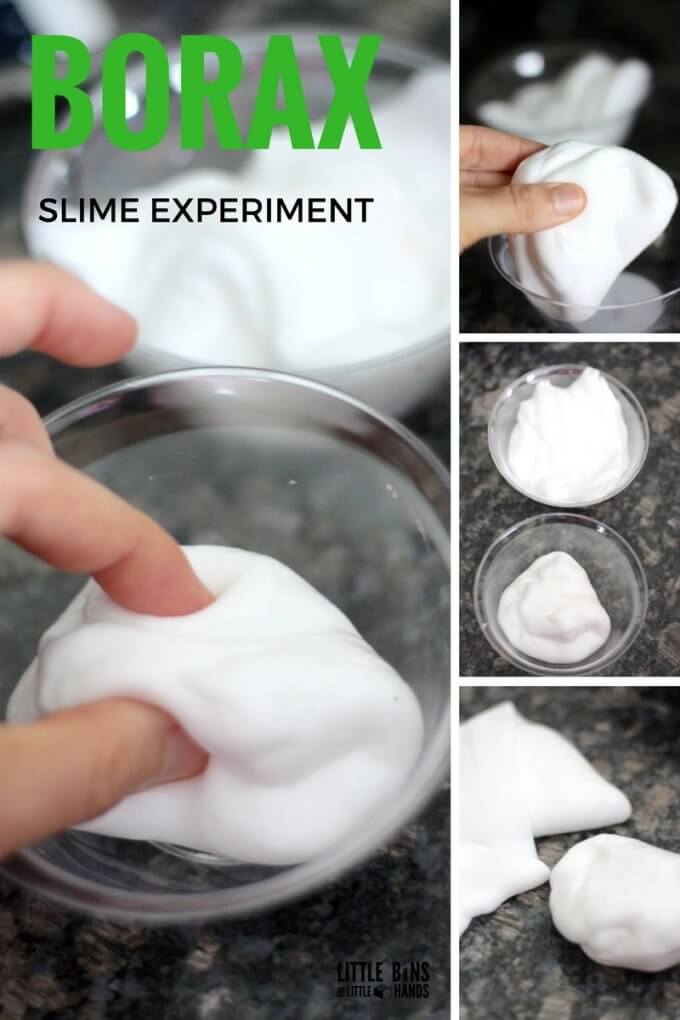
2. Are All Brands Of PVA Washable School Glue The Same?
This is a great opportunity to test the classic Elmer’s Washable School Glue alongside Dollar Store/Staples brand glue or even Crayola Glue!
The key to this slime science project is to decide how you will compare the different batches of slime made from each brand of glue.
Of course, keep your recipe and method for making your slime the same each time. Think about what makes a good slime… stretch and viscosity or flow and decide how you will measure those characteristics for each slime. Your observations of the “feel” of each slime are valid data as well.
3. What happens if you change the amount of glue in the recipe?
We tried out this slime science experiment using our classic liquid starch slime recipe. This is also how we ended up with FLUBBER!
Decide how you will vary the amount of glue. For example; you could do one batch with the normal amount of glue, twice the amount of glue, and half the amount of glue.
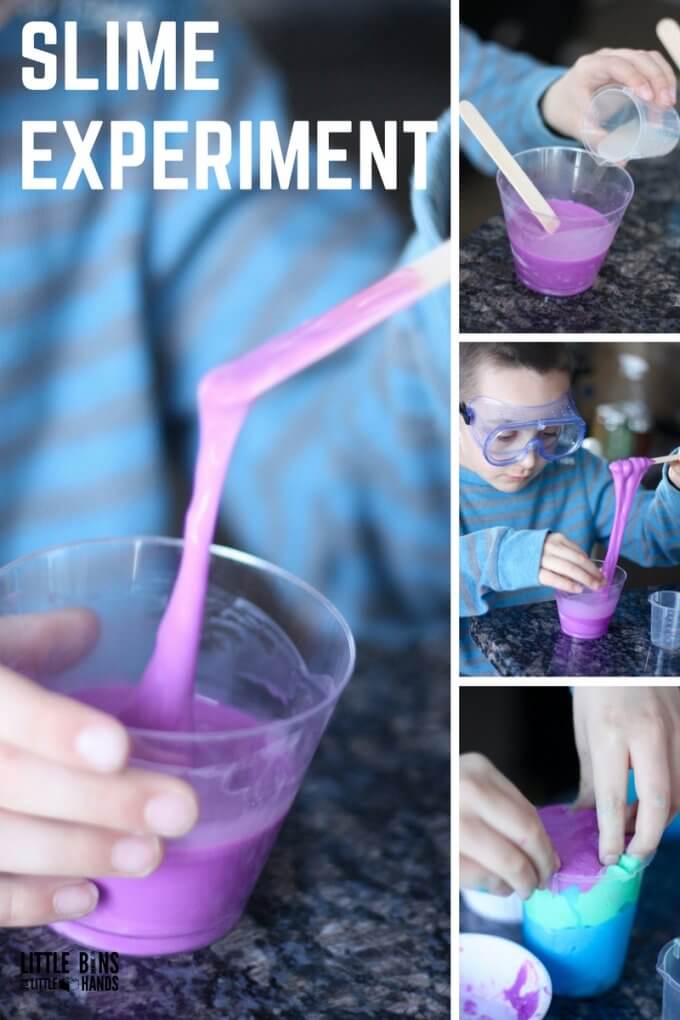
4. What happens if you change the amount of baking soda?
Similarly, to changing the amount of glue, investigate what happens to your slime when you change the amount of baking soda added to the saline solution slime or fluffy slime recipe, Do a batch without baking soda and one with and compare. Baking soda is generally used to firm up this slime recipe.
5. Borax Free Slime Experiment
What’s the best ratio of powder to water for a borax free fiber slime? Use our taste safe fiber slime recipe to test your favorite consistency for gooey slime.
We went through several batches to see what worked the best. Make sure to decide ahead of time how you will measure the slime consistency for each batch.
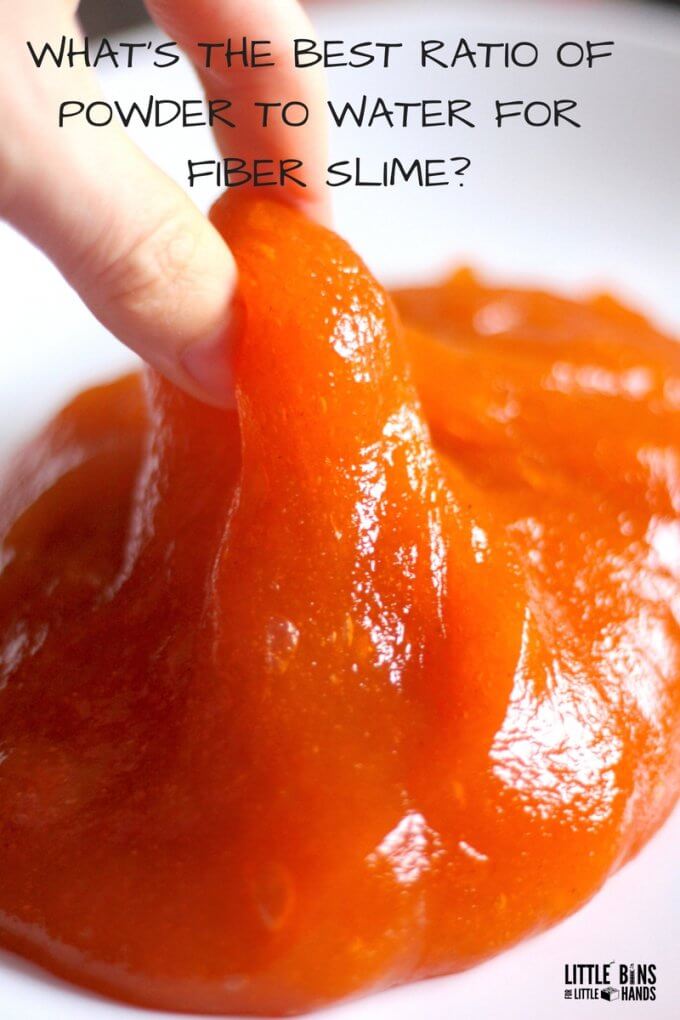
6. What amount of foam beads makes the best floam?
What’s the best amount of styrofoam beads for homemade floam? This is how we tested our floam and recorded the results as we went along. Or you can vary and then compare the sizes of styrofoam beads too!
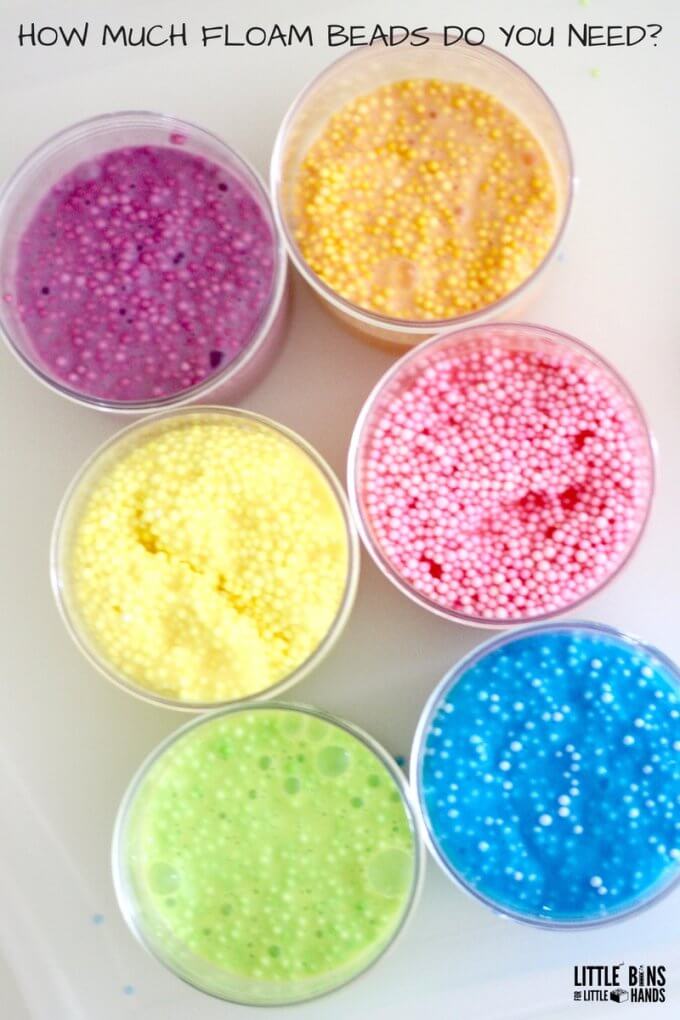
More Slime Science Projects
What else can you test when it comes to your next slime project? What about…
Clear Glue vs White Glue
Which glue makes the better slime? Use the same recipe for both and compare/contrast the similarities/differences. Does one recipe work better for either clear or white glue?
Does food coloring affect the consistency of slime?
Do different colors have an effect on the consistency of the slime. You can use the standard box of colors, red, blue, yellow, and green to see! Make sure to use all the colors with one batch of slime!
What happens if you freeze slime?
Is slime affected by temperature? What happens if you freeze your slime?
Come up with your own slime experiment!
Try out your own slime science experiment. However, we do not recommend substituting slime activators without knowing what the chemical reaction will be first.
You could…
- explore viscosity
- discover new textures
- learn about non-Newtonian fluids and shear thickening
- explore states of matter: liquids, solids, and gasses
- learn about mixtures and substances and physical properties
Printable Ultimate Slime Recipes Guide
This is the ULTIMATE collection of slime recipes every kid wants to make! Explore the best recipes and find the right supplies to make slime time a breeze!
Perfect for kids of all ages, including tweens and teens! Taste-safe recipes are perfect for the youngest slime fans.
What’s Included:
- The Ultimate Slime Guide contains all the specialty recipes you or your kids want to make! You’ll find all the best tips, tricks, hints, and slime-y info in almost 100 pages!
- The Ultimate Slime Holiday Guide covers all the best holidays and seasons with special themes and slime-y projects!
- The Ultimate Borax-FREE and Taste-Safe Slime Guide shows you how to make all the best borax-free, taste-safe, and non-toxic slimes kids love, such as marshmallow slime. These recipes do not use chemical activators such as saline solution, liquid starch, or borax powder, making them truly borax-free.
- The Ultimate Slime Coloring Book is an easy-to-print coloring book kids will love! Color and design your favorite slimes!
- The Slime Starter Guide is a fact-filled information guide with everything you need to know to make the best slime ever!
- Slime Science Project Pack helps you turn slime-making into a science lesson!


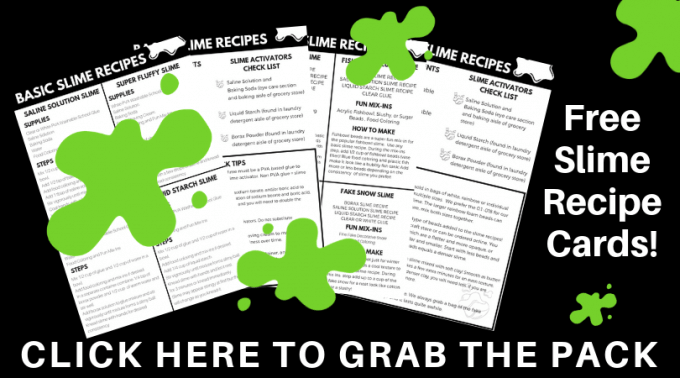

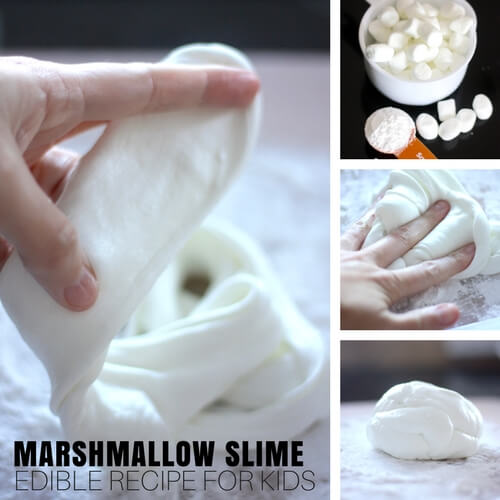
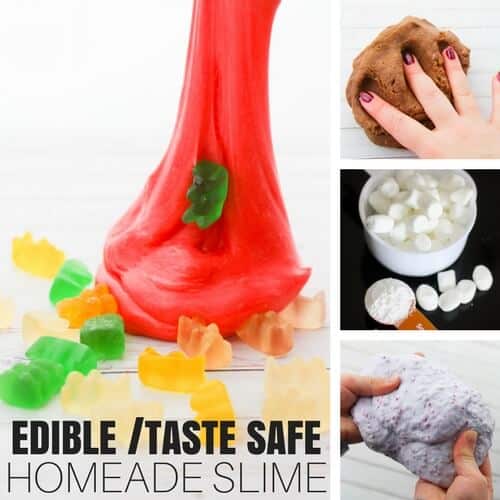
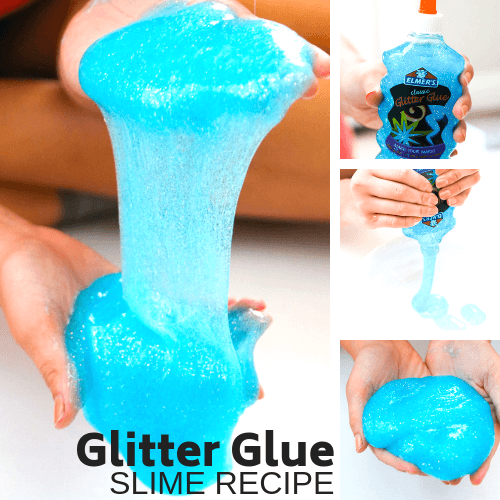
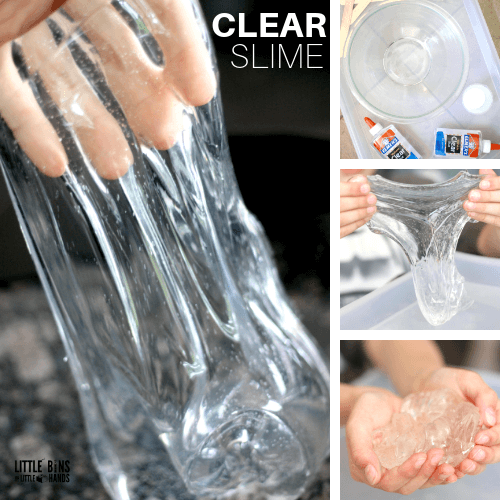
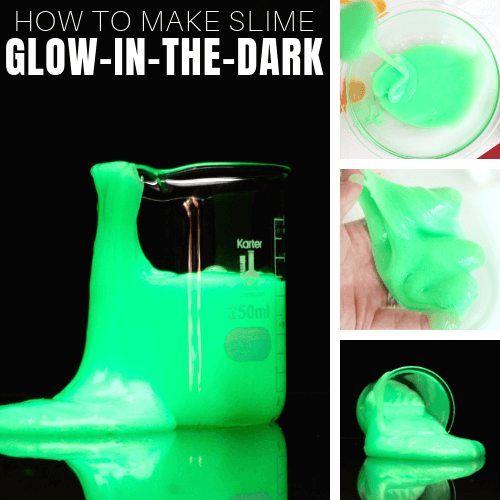
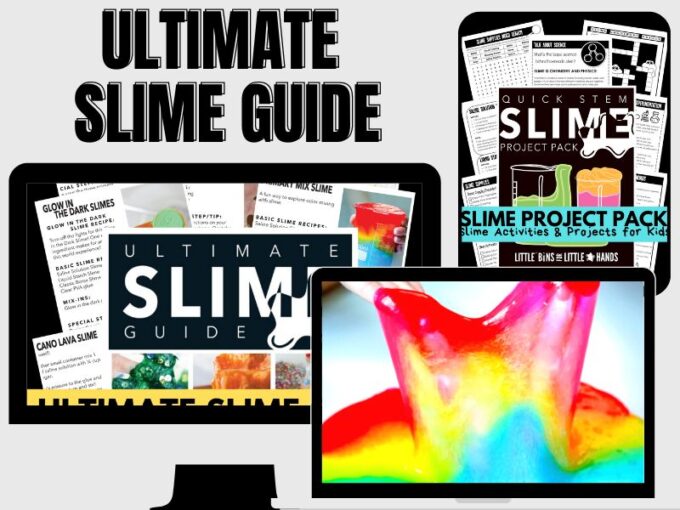






who is the author of this website?? i need to know for a science project
My name is Sarah McClelland.
Everything looks so pretty! I need some help, I can’t find sta-flo liquid starch in my country, I tried corn starch but its too thick,I tried niagara spray and liquid but won’t work either. I need it to be a flubber starch, with iron to do magnetic starch 😀 Any advice is welcome
What country are you in? Can you find saline solution containing boric acid and sodium borate?
Please email me at [email protected]
whenever i try make slime it never works and the first time i made a home made slime it was way too sticky and to make work we had to mix store bought slime in to make it activate
Well I am happy to help if you want to email me [email protected]